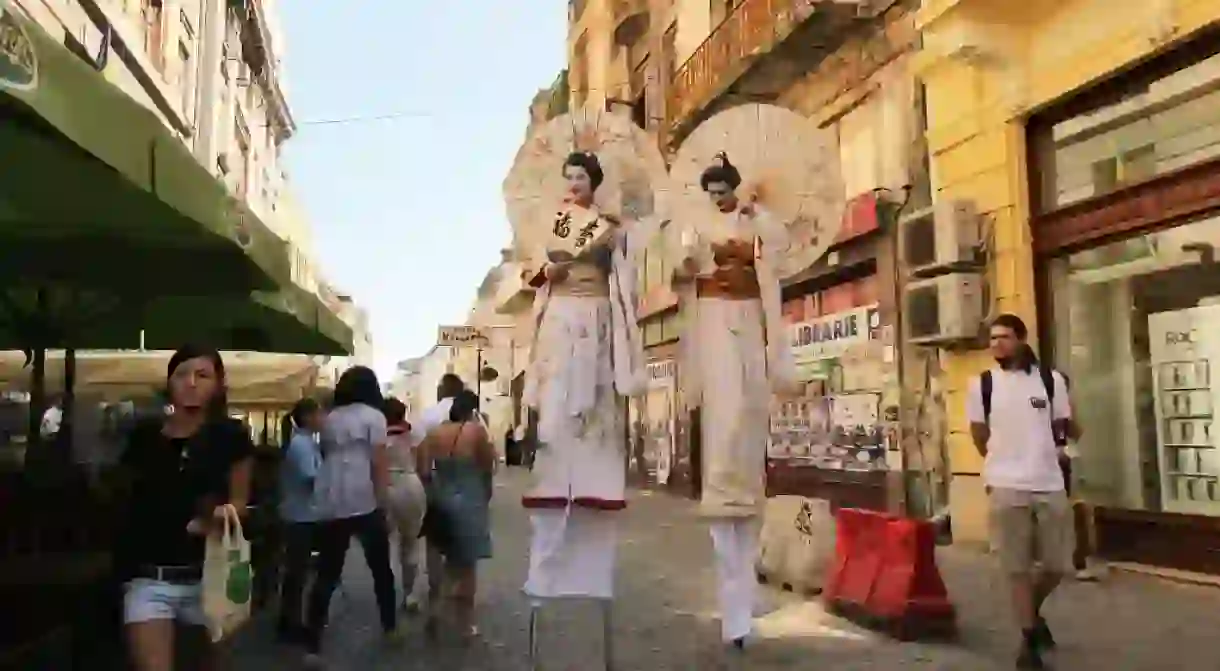Here's How Lipscani Street Got Its Name

Today, the indisputable party epicentre of Bucharest is the Lipscani neighbourhood. Better known as ‘Centrul vechi’, aka the Old Centre, it has a rich and colourful past one can only guess while walking down its winding cobbled streets. To find out how the street – and neighbourhood – got its name, one must go back as far as the Middle Ages and explore the region’s trading history.
A party district with a rich history
The main street of Bucharest’s Old Centre, Lipscani, has a fascinating story. From an administrative point of view, Lipscani Street belongs to two of Bucharest’s administrative units, Sectors 3 and 5. A so-called axis mundi of Bucharest’s party district, its history dates back to the Middle Ages, when the area was used as a trading site. According to historians, this is where merchants from all over Europe would come to sell their wares, such as clothes, leather accessories, spices and more. Already at that time, the most important street in the neighbourhood, the narrow street known then as Ulița Lipscanilor, would connect the city’s commercial centre to Podul Mogoșoaiei, which is today’s Calea Victoriei. The street gained in importance during the rule of Prince of Wallachia Constantin Brâncoveanu, when the entire Lipscani neighbourhood became the most important trading area in the principality of Wallachia.
An unexpected German connection
Somewhat unexpectedly, the name Lipscani was borrowed from the term used to describe the foreign merchants who would come to trade, most of whom were from Leipzig. Starting from the Romanian word for that German city, Lipsca, in 17th-century Romanian, the name lipscan then came to describe every Western European merchant who would sell his wares in the area.

The street continued to develop throughout the ages, with Prince Șerban Cantacuzino adding an inn that after 1880 would leave space for the Palace of the National Bank of Romania. Hanul cu Tei, still standing on Lipscani, was built at the beginning of the 19th century.
The numerous buildings, many decorated with intricate stucco adornments and in the Baroque style prevalent in the 19th century, were seized soon after the Communist rule started in 1948, leaving them in a derelict state until after the 1989 Revolution that toppled the regime.
Going back to its roots
It was around 2000 that the Old Center, once a shabby neighbourhood, started to rise from its own ashes. Local investors were quick to spot a flourishing business opportunity, while the local crowds enthusiastically answered by filling the existing gap in the market. Today, most streets in the area are lined with bars, pubs, terraces, and restaurants that cater to all tastes and nationalities. A tourist hotspot, it is the go-to place for night-long pub crawls and parties, in every season.

Of late, attracted by the impressive footfall, several big brands have started setting up shop in the bustling area of Lipscani, meaning the street is now going full circle and becoming once more a busy international trading venue.













